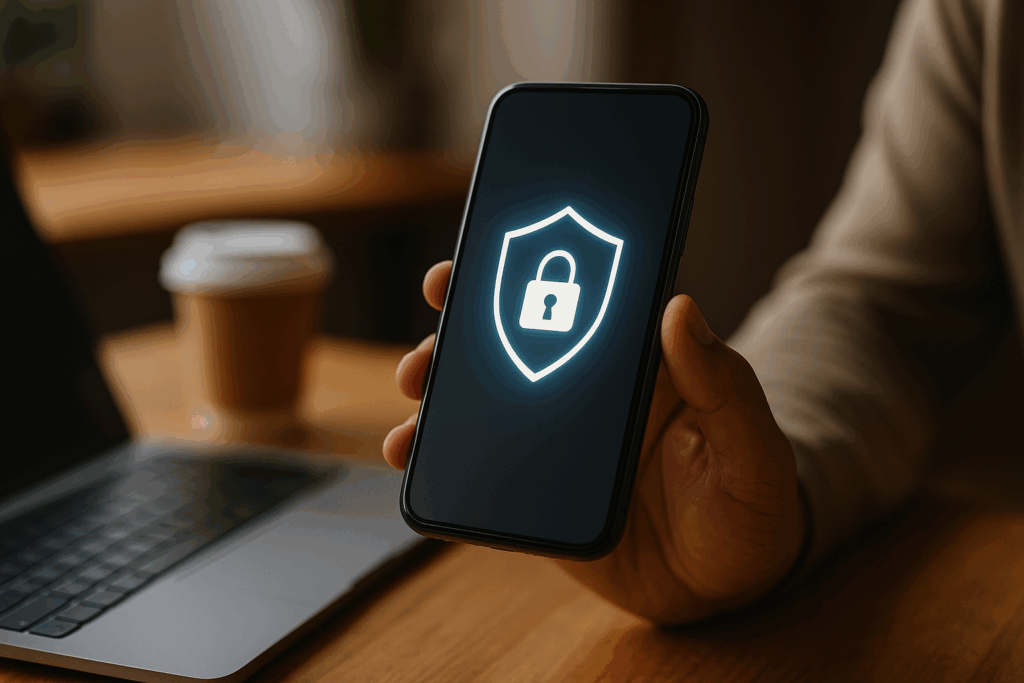
The digital creator economy has gone mobile. Where creators once relied on desktops and fixed studios, the smartphone has taken over as the creative core. It captures, edits, and publishes—all from the same device. The “mobile-first workflow” has become the dominant model for influencers, social media managers, and marketers alike.
But with this freedom comes exposure. Public Wi-Fi, unsecured networks, and geo-restrictions create constant vulnerabilities. For anyone working online, a Virtual Private Network (VPN) is now as essential as a good camera app. It’s what keeps creative independence safe in a hyper-connected world.
Because connection security defines productivity, choosing the right VPN matters as much as the device you use. If you’re weighing which service fits a creator’s mobile routine, this comparison of Surfshark vs NordVPN offers a detailed breakdown of speed, security, and device support—key factors for social-media professionals who depend on reliable encryption wherever they work.
What Is a Mobile-First Workflow?
A mobile-first workflow means structuring your creative and business processes around mobile devices rather than adapting desktop practices to smaller screens. It’s more than a convenience—it’s a philosophy of immediacy. Content starts, evolves, and ends on the phone.
How Mobile-First Transformed Social Media
Mobile-optimized platforms like Instagram, TikTok, and YouTube Shorts reward spontaneity. Their interfaces favor vertical video, touch editing, and real-time posting—all native to smartphones. For creators and marketers, this means a fully integrated loop: ideation, production, publishing, and audience engagement all happen in one ecosystem.
As a result, 90 percent of global social-media users now access platforms exclusively on mobile devices. That behavioral shift forces every creator and brand to match workflow to audience habits. A laptop-bound team moves too slowly in a feed that updates every second.
Why Creators Choose Mobile Over Desktop
Mobility gives agility. Shooting, editing, and posting from a single device eliminates friction between ideas and execution. When a trend breaks, the first person to respond visually wins visibility. Modern smartphones now rival professional gear, offering 4K video, multi-lens setups, and advanced color grading in real time. Combined with cloud storage and AI-driven apps, the phone is a full studio that fits in your hand.
Why the Mobile-First Trend Is Accelerating
Three forces are driving the mobile-first revolution: technological power, social behavior, and economic accessibility. Devices are faster, networks are global, and production tools cost a fraction of what they once did.
Creators no longer need expensive editing rigs or office studios. A phone, a stabilizer, and good lighting can sustain an entire career. Brands, too, benefit from remote collaboration—campaigns can be managed from anywhere, reviewed instantly, and adjusted on the fly.
For agencies juggling multiple clients, mobility means faster feedback cycles and always-on responsiveness. In social media’s attention economy, speed equals success.
The Hidden Risks of Mobile-Only Work
While mobile-first workflows bring convenience, they also introduce new vulnerabilities. Constant connectivity increases exposure to cyberthreats. Public Wi-Fi in cafés, airports, and hotels can easily become gateways for interception or credential theft.
Geo-restrictions are another barrier. Many social platforms or campaign dashboards are blocked in certain regions. When traveling, creators may lose access to brand accounts, monetization portals, or analytics tools simply because of IP location.
There’s also the issue of data harvesting. Apps collect behavioral and location data, creating detailed advertising profiles. For influencers handling sponsored content and payment details, this uncontrolled data exchange becomes a privacy liability.
And because phones are portable, they’re more likely to be lost or stolen. Without strong encryption, a missing device can quickly turn into a major breach.
All these problems converge on one simple truth: the more mobile your workflow, the more you need encrypted protection.
Why VPNs Are Critical for Mobile-First Creators
A VPN for mobile content creators does far more than hide your IP address. It establishes a secure, encrypted tunnel between your device and the internet, shielding data from interception and bypassing digital barriers.
For the mobile-first workforce, VPNs serve six essential functions:
- Security on Public Networks – Whether you’re editing from a coffee shop or uploading from an airport lounge, a VPN prevents hackers from reading your data packets. Everything—messages, passwords, analytics dashboards—travels encrypted.
- Freedom From Geo-Blocks – If TikTok, Instagram, or YouTube analytics are blocked in your current region, connecting through a VPN server elsewhere restores full access.
- Consistent Privacy Across Apps – By masking IP addresses, VPNs prevent platforms and advertisers from building cross-app behavior profiles.
- Reliable Session Continuity – Quality VPNs maintain connections even when switching between Wi-Fi and mobile data, crucial for live streaming or uploads.
- Professional Credibility – Using a VPN demonstrates data responsibility to brand partners and agencies who share confidential campaign information.
- Compliance and Control – For international teams, VPNs ensure compliance with privacy regulations like GDPR while simplifying secure remote access.
Choosing the Best VPN for a Mobile-First Workflow
When evaluating providers, creators should focus on real-world performance rather than marketing slogans. The ideal VPN for social media is fast, mobile-optimized, and transparent about data practices.
Services like Surfshark and NordVPN have become popular precisely because they combine strong encryption with user-friendly mobile apps. The Surfshark vs NordVPN comparison highlights distinctions in speed, server coverage, and simultaneous connections—features that directly affect content upload times and multi-device use.
Speed and Performance on Mobile
Creators handle large video files, live broadcasts, and continuous uploads. A VPN that throttles bandwidth can cripple productivity. Independent tests consistently rank Surfshark and NordVPN among the fastest VPNs for both Wi-Fi and 5G networks. Their mobile clients dynamically select the nearest low-latency server to maintain smooth performance.
Device and App Integration
Mobile-first professionals often juggle phones, tablets, and laptops. A provider offering unlimited or generous device connections simplifies account management. Surfshark allows unlimited connections per subscription, while NordVPN focuses on performance consistency across six devices—details worth considering depending on workflow size.
Security, Audits, and Transparency
A no-logs policy is non-negotiable. Both Surfshark and NordVPN have undergone independent audits verifying that user activity data isn’t stored or shared. This assurance distinguishes professional-grade VPNs from free or low-quality alternatives that monetize user information.
How to Integrate a VPN Into Daily Mobile Workflows
The power of a VPN lies in seamless integration. It should activate automatically and stay invisible while you work. For creators, that means configuring “auto-connect on insecure networks” so the VPN launches whenever you join public Wi-Fi.
During international travel, choosing a server close to your target audience optimizes upload speed and algorithmic reach. A travel vlogger posting for U.S. followers might route through a U.S. server even while filming abroad to ensure analytics and ad placement remain consistent.
Mobile VPN apps also support split tunneling, allowing you to choose which apps use the encrypted connection. This feature helps maintain high speeds for editing or cloud syncing while securing browser and social-media sessions.
Ultimately, the VPN should feel like part of the creative rhythm—quiet, constant, and reliable.
Real-World Example: Creators on the Move
Imagine a travel influencer documenting their journey across Southeast Asia. Each morning, they film footage on a smartphone, edit short clips, and upload them directly to Instagram Reels and TikTok. At night, they review analytics and negotiate brand deals over email—all on public Wi-Fi. Without a VPN, every login and upload exposes their credentials. With a VPN, the same actions occur through an encrypted tunnel invisible to local networks.
Or picture a remote marketing team managing multiple client accounts across continents. Team members access shared drives, analytics dashboards, and ad managers from different countries. A unified VPN policy keeps client data confidential and ensures uninterrupted access even when regional restrictions appear.
These scenarios illustrate why VPNs are now considered core creative infrastructure, not optional accessories.
SEO Keyword Focus: Mobile-First Content Creation Security
Search interest for mobile content security, best VPN for social media, and Surfshark vs NordVPN continues to climb because professionals recognize that visibility alone isn’t enough—they need resilience. In SEO terms, “mobile-first workflow” and “VPN protection for creators” now intersect in user intent. People searching for one increasingly mean both: how to stay efficient and safe while working entirely from a smartphone.
How Search Behavior Reflects Creator Needs
Analytics show that searches for “secure Instagram marketing,” “VPN for influencers,” and “bypass social media restrictions” have risen sharply since 2023. This mirrors the professionalization of online influence. Creators want business-grade tools with consumer-grade simplicity. They aren’t just chasing followers—they’re protecting assets, contracts, and reputations.
How VPNs Enhance Social-Media Strategy
A VPN doesn’t just guard data; it expands strategic capability. By switching server regions, marketers can preview how campaigns appear to audiences in different countries, verify ad placements, and test geo-targeted content delivery.
For example, a brand running a U.K.-exclusive giveaway can verify its visibility through a London-based VPN server, ensuring that regional filters display correctly. Conversely, creators can analyze how content performs across markets without physically being there.
In the algorithm-driven world of social platforms, access to accurate regional insights translates directly into engagement growth and ROI.
Beyond Security: Building Audience Trust
Audiences today value authenticity and responsibility. When creators talk openly about protecting their data or using secure tools, it strengthens credibility. Viewers equate professionalism in privacy with professionalism in content.
For agencies, VPN adoption becomes a brand-safety talking point—proof that client information and campaign assets are handled responsibly. In partnership negotiations, this kind of due diligence often differentiates serious collaborators from casual hobbyists.
Security has become part of the creative brand identity. Just as creators showcase production quality and storytelling style, they increasingly emphasize ethical digital practices.
The Future of Mobile-First and VPN Technology
As 5G networks expand and devices grow more powerful, the line between mobile and desktop computing will fade entirely. Real-time editing, AI captioning, and augmented-reality production will happen on phones within seconds of capture.
But with greater connectivity comes greater regulation. Nations are tightening control over digital data flows, and content restrictions vary widely. VPNs will remain essential for creative freedom, allowing legitimate access to global tools and audiences while maintaining compliance with privacy standards.
We will also see integration deepen: VPNs embedded directly into mobile operating systems or content-creation apps, offering one-tap activation rather than separate logins. Machine learning may soon optimize routing automatically, balancing speed and encryption in the background.
The coming wave of connected wearables—camera glasses, drones, smart microphones—will add new endpoints that need protection. A modern VPN account capable of covering unlimited devices, like Surfshark’s model, will fit this multi-device future perfectly.
Why Every Mobile-First Creator Should Act Now
Waiting to secure your workflow until after an incident is costly. Account hijacks, lost sponsorship data, or region-locked downtime can undo months of progress. Establishing VPN habits early builds resilience without disrupting creative flow.
Begin with small adjustments: keep your VPN on auto-connect, choose reliable servers near your core audience, and check analytics performance when switching locations. Over time, these micro-routines create a safety net invisible to followers but invaluable to your business.
The investment is modest compared to the potential loss of revenue or reputation from a security lapse. Think of it as digital insurance for the lifestyle you’ve built around mobility.
Conclusion: Freedom, Creativity, and Protection in Balance
The rise of mobile-first workflows has democratized creativity. Anyone can capture, edit, and publish from anywhere. That accessibility fuels innovation but also demands responsibility. Data privacy, secure networks, and unrestricted access are no longer side issues—they’re pillars of professional digital practice.
A VPN empowers creators to keep control of their connection in every situation. It defends against interception, restores access where networks falter, and provides a privacy buffer between personal life and professional presence.



